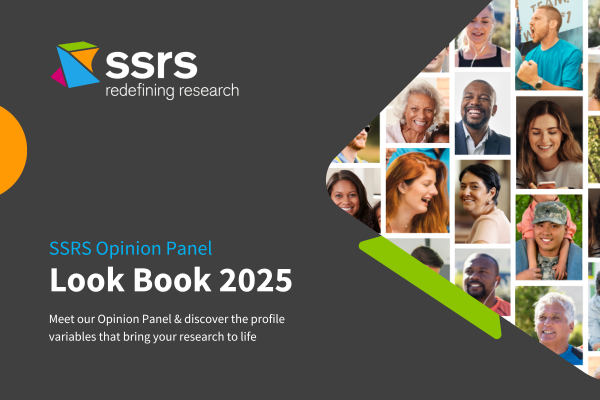At SSRS, we believe survey research is most compelling and actionable when we connect the dots between the scale and representativeness of surveys and the depth and resonance of qualitative research. We invite users of quantitative research who have never considered qualitative research – or aren’t quite sure how it can be leveraged – to read below to see how a qualitative phase can strengthen your next survey.
“What’s the benefit of adding a qualitative phase onto a quantitative study?”
Adding a qualitative phase to a quantitative study enhances both the depth and interpretive power of the research. While quantitative data provides the WHAT – measuring patterns, identifying relationships, and supporting generalizable conclusions, qualitative research unpacks the WHY – exploring attitude formation, interpretation of key concepts, and experiential impact.
Even with a small number of qualitative interviews or focus groups, we can uncover shared patterns, unmet needs, or misconceptions that help to either shape or explain surveys. A few recent SSRS examples highlight the value that qualitative research can add to a survey:
- Developing questionnaire content: Prior to conducting a statewide survey about the impact of medical debt on people’s lives, SSRS conducted a series of focus groups to hear from diverse voices on how medical debt affects household finances, health and health care, well-being, and other aspects of people’s lives. The findings contributed directly to the construction of a statewide survey that systematically measured the range of impacts of medical debt. Medical Debt in Missouri – Missouri Foundation for Health
- Deepening survey findings: After conducting a survey of Californians who had been procedurally disenrolled from Medi-Cal during the redetermination process, SSRS conducted a series of focus groups and online bulletin boards to explore the impact of the procedural disenrollment on people’s lives. The goal of the qualitative phase was to enhance the survey findings with actual experiences and perspectives on the renewal process, the impact of coverage disruption, and suggestions for improving the renewal process. Lessons from the Medi-Cal Unwinding: Enrollee Experiences and How They Would Fix Renewals
- Revealing potential blind spots: General population surveys can often miss the full picture by not collecting enough responses to describe low-incidence populations or rare situations. To help support the development of survey questions about low-incidence healthcare coverage situations, SSRS conducted a series of exploratory in-depth interviews with people who had experienced coverage denials or billing errors so that we could ensure the survey questions would reflect the full range of situations people might experience.
- To explore long term program impact: SSRS conducted a survey of lower income adults to assess challenges with affordability of broadband service. Following the end of the Affordable Connectivity Program (ACP), SSRS conducted two waves of in-depth interviews, 5 months apart, to understand both short- and long-term impacts that the loss of the stipend had on household internet access and finances. Budgeting for Broadband: What Losing the ACP Means to Household Budgets and Behavior | Benton Institute for Broadband & Society
“I know how to report on survey data findings…but what can we do with qualitative data?”
While survey findings are typically conveyed as percentages with statistical confidence intervals, qualitative data are interpreted through patterns and themes and are represented in stories, quotes, and narratives. We use grounded theory approaches to extract thematic findings and to identify illustrative quotes of participants speaking in their own voices. The findings from a qualitative study are then used in many strategic ways:
- To humanize the survey findings. Verbatim quotes and video clips can bring survey data to life. Qualitative findings reported alongside statistical charts, tables and graphs make reports and presentations more compelling and more grounded in real-world experiences.
- To refine strategy and messaging. Qualitative research shows how people talk about an issue, what resonates with them, and where confusion or resistance may lie. This helps organizations to refine their communications and outreach to better meet people where they are.
- To support segmentation and persona development. By listening carefully to participants’ attitudes, motivations, and behaviors, qualitative research informs the creation of personas or typologies—giving organizations a more grounded sense of who they’re servicing or targeting, not just how many.
“What’s the bottom line on blending qual and quant?”
The bottom line is that quantitative data shows the ‘what’ and ‘how many,’ and qualitative insight helps uncover the ‘why’ and ‘why it matters.’ When used together, qualitative and quantitative methods complement each other and strengthen the overall validity, clarity, and utility of the research.
Click for more information about SSRS Qualitative Research >>









